Hydrangeas are flowering shrubs that fill many gardens with their stunning and elaborate flower heads.
However, gardeners often wonder about the potential invasiveness of hydrangea root systems and their impact on surrounding plants and structures.
Luckily, you can breathe a sigh of relief when it comes to hydrangeas. Their roots are generally well-behaved and not invasive.
Unlike some plants with aggressive root growth, hydrangeas have shallow, fibrous root systems.
The chances of their roots causing significant damage to nearby plants or underground structures are pretty low.
Now, let's dig deeper into the topic and get into the fascinating insights about hydrangea roots!
Are Hydrangeas Invasive Plants?
When you think about adding hydrangeas to your garden, you may wonder if they have invasive tendencies.
Fortunately, hydrangeas are generally not considered invasive plants.

First of all, it's essential to understand what makes a plant invasive.
Invasive plants are non-native species that can quickly spread and outcompete native plants.
They can cause harm to the environment by disrupting ecosystems and reducing biodiversity. However, hydrangeas are not considered invasive in most areas.
Hydrangeas do not spread aggressively through their growth habit. Instead, they slowly expand over time, making them easy to control and manage.
While the flowers of hydrangeas are beautiful, they do not produce large amounts of seeds that can spread throughout your garden.
So there's no need to worry about hydrangeas taking over your yard through seed production.
Do Hydrangeas Have Invasive Roots?
No, hydrangeas do not have invasive root systems.

Unlike invasive plants, which tend to have aggressive roots that can quickly spread and dominate an area, hydrangea roots are relatively tame.
Despite their lush foliage and vibrant flowers, hydrangeas grow mainly near the soil surface and don't compete with other plants for resources too aggressively.
How Deep Do Hydrangea Roots Grow?
Hydrangeas usually establish their roots at depths of 12-18 inches, ensuring they can access sufficient water and nutrients to support their abundant blooms.
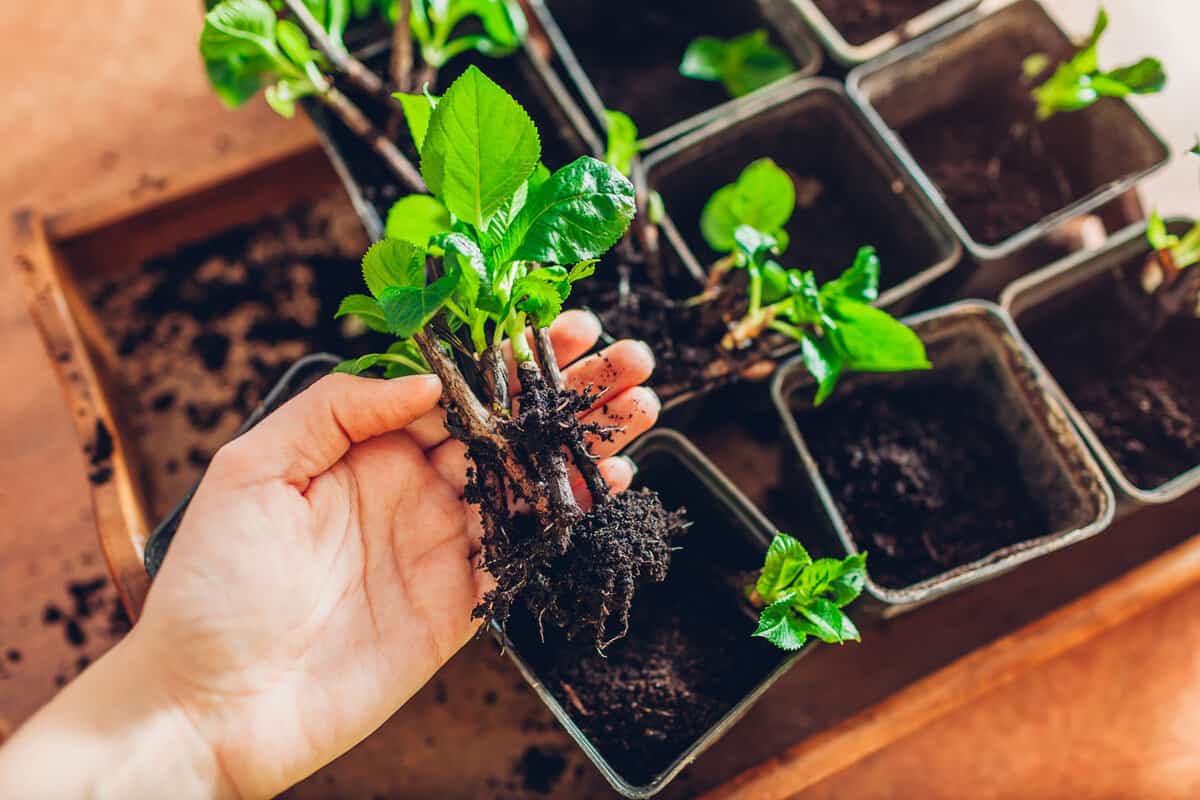
While they don't go deep, these roots tend to spread horizontally, creating a broad network that extends approximately 1.5 to 3 times the diameter of the canopy.
What Type of Root System Does a Hydrangea Have?
The root system of hydrangea plants is relatively straightforward, but having knowledge can aid in better planning when planting hydrangeas in your garden.
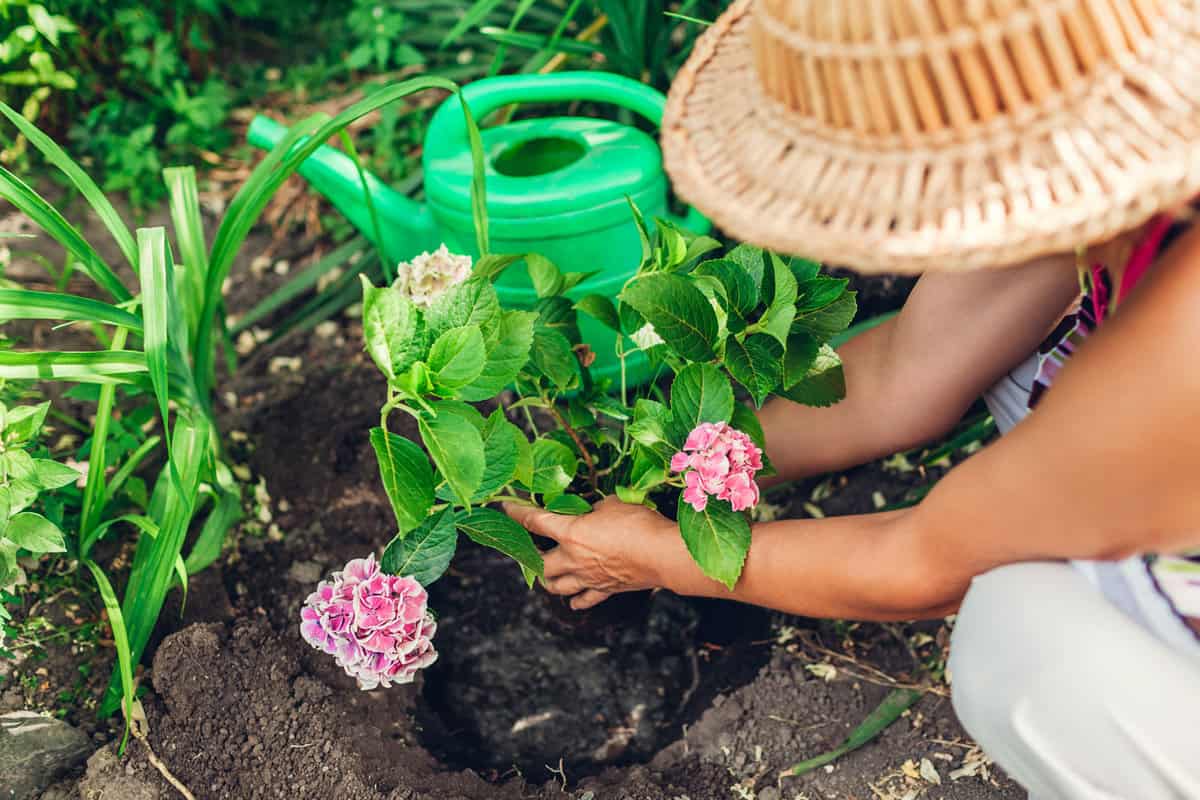
Understanding their root system allows for informed decisions and a well-thought-out planting strategy.
In this section, we will discuss the type of root system hydrangeas have and how this impacts their growth.
Absence of a Central Taproot
Unlike trees and some other plants, hydrangeas do not have a central taproot.
Instead, they possess a more shallow and widespread root system, which is generally less invasive compared to plants with taproots.
Shallow Roots
Hydrangeas feature a relatively shallow root system, rendering them susceptible to drought and flooding. This presents both advantages and challenges in garden design.
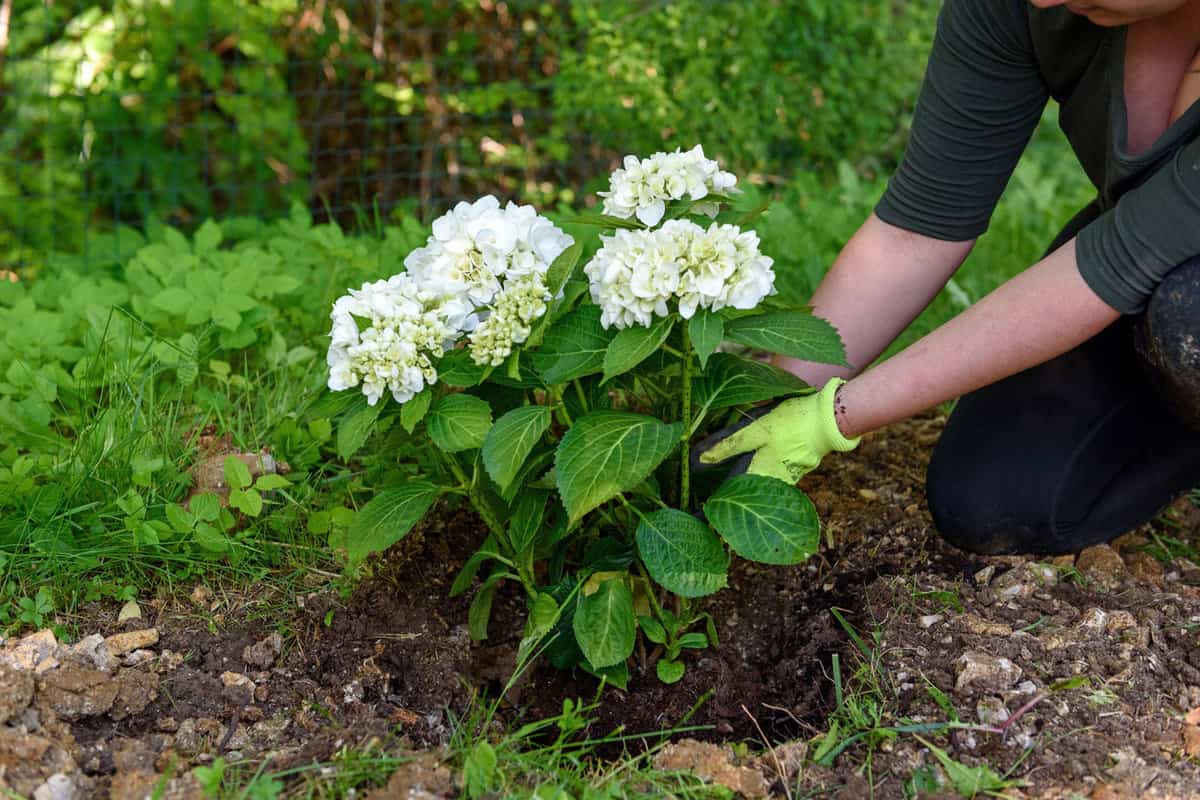
On the one hand, it means they are less likely to cause damage to nearby structures and other plants.
On the other hand, you need to be mindful of providing them with adequate water and proper drainage.
Keep your hydrangeas well-watered, especially during dry spells, and take care to plant them in areas with good drainage to help ensure their overall health.
Dual Root System
In addition to their shallow roots, hydrangeas also have a dual root system. This means they have both fibrous and woody roots.
The fibrous roots help the plant to absorb water and nutrients from the soil, while the woody roots provide strength and stability.
Because of this, hydrangeas are able to thrive in a variety of conditions which makes them more resilient than plants with a single root type.
Do Hydrangeas Spread or Multiply?
Hydrangeas are not known to spread aggressively or become invasive.
However, they can grow quite large, with some species reaching a height and width of up to 15 feet.
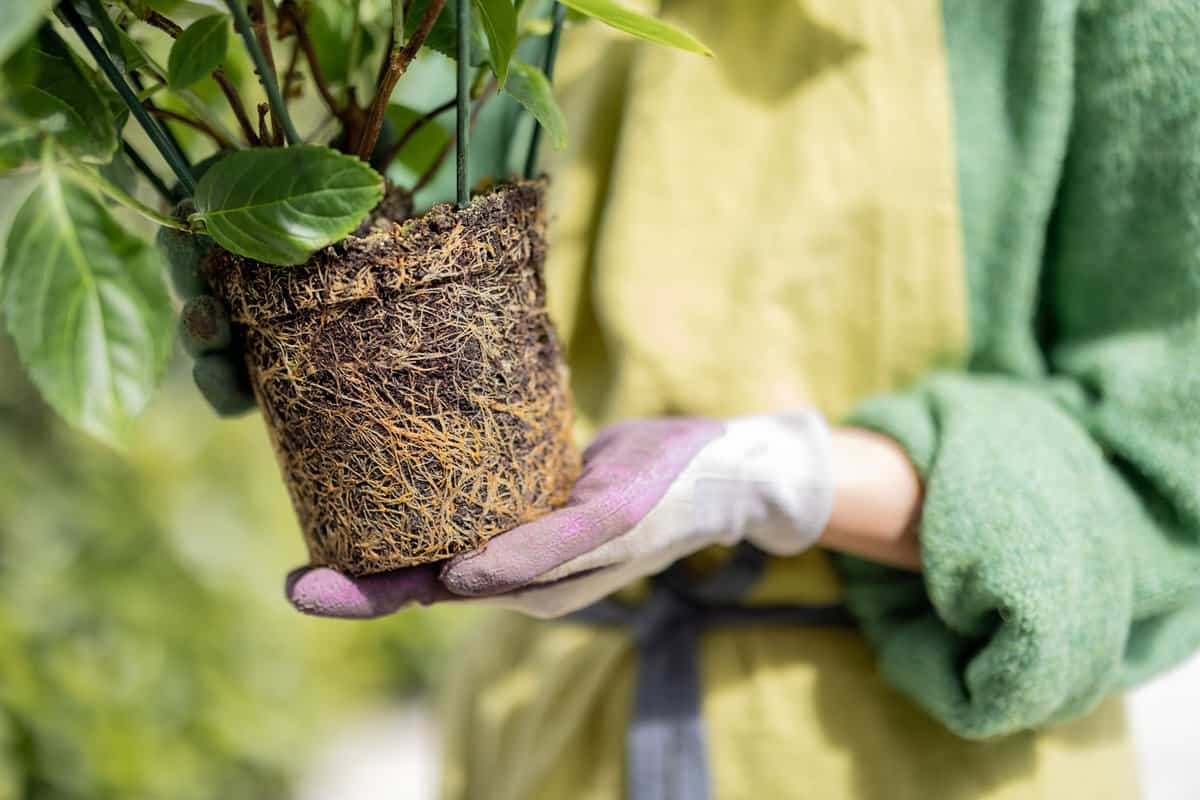
As the plant matures, it may produce new shoots from the base, called "suckers," causing it to increase in size slowly.
These shoots can easily be pruned to control the plant's growth.
How Do You Keep Hydrangea From Spreading?
To maintain the desired size and shape of your hydrangeas, regularly prune them. Here are some tips for keeping your hydrangeas in check:
Annual pruning
Prune your hydrangea after it has finished flowering. This will help maintain its size and encourage new growth for the upcoming season.
Remove suckers
Keep an eye out for new shoots emerging from the base of the plant. Remove them promptly to prevent the hydrangea from spreading out further.
Monitor growth
Regularly inspect your hydrangea for any signs of excessive growth or invasiveness. This timely intervention will help maintain its beauty and size.
Where Is The Best Spot To Plant Hydrangea?
Hydrangeas thrive in mostly shady spots, but some varieties can handle more sun.

The optimal planting time is in spring after frosts have passed and before the hottest summer months arrive.
Active growth for hydrangeas typically occurs from March through September.
Can You Plant Hydrangeas Close to a House?
Yes, you can plant hydrangeas close to a house, but be mindful of the space they need to grow.
Hydrangeas can range in height from 3-5 feet, with an equal or greater spread.
Ensure that you leave adequate space between your house and the hydrangea to allow for healthy growth.
Can Hydrangea Roots Damage Foundation or Pipes?
As hydrangea roots are non-invasive, they generally do not cause significant damage to foundations or pipes.
However, it's always a good idea to maintain a safe distance from underground utilities and structures when planting any type of shrubs or trees.
Is It Safe to Plant Hydrangeas Next to Other Plants?
You can safely plant hydrangeas next to other plants as long as they have enough space to grow without competing for resources.
The key is choosing companion plants with similar light, moisture, and soil nutrient needs.
How Much Space Do Hydrangeas Need?
Hydrangeas require sufficient space for their roots to grow and spread, as well as for air circulation around their foliage.
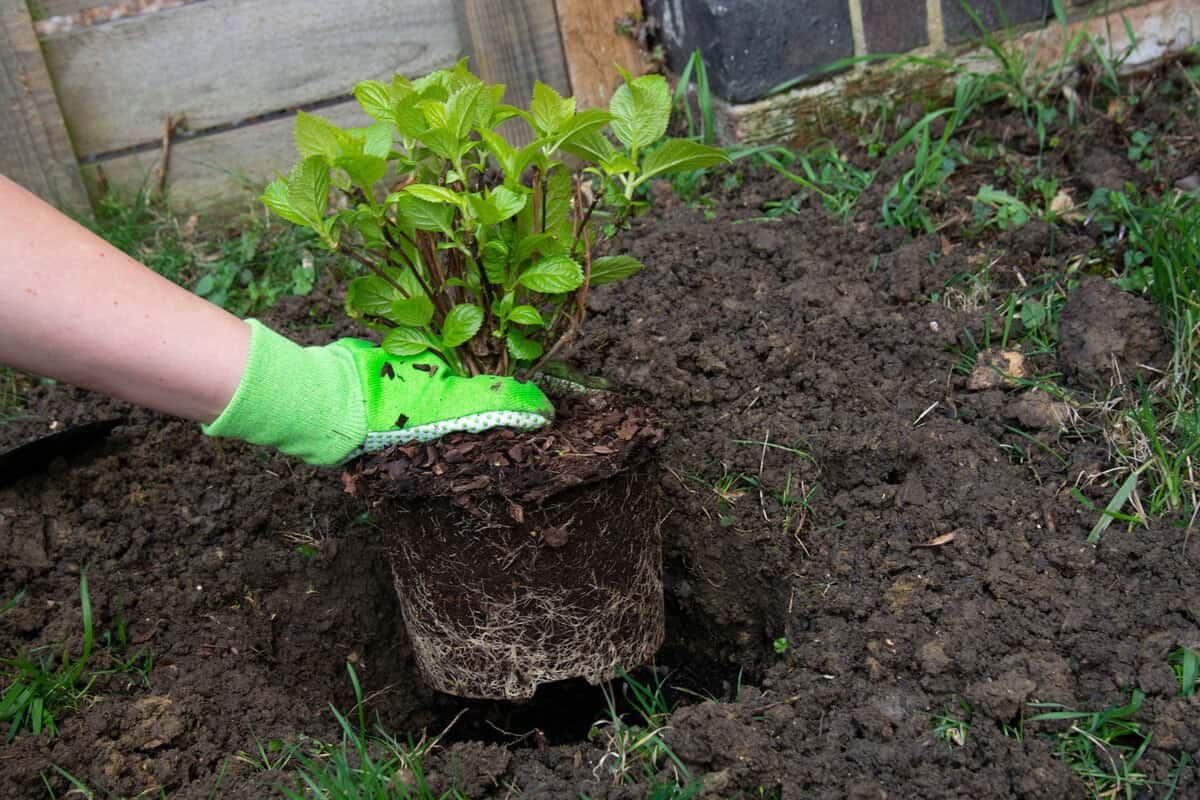
A general rule of thumb is to space hydrangeas at least 5 feet apart, although some larger varieties may need even more room.
How Can You Get Rid Of Hydrangeas?
There might come a time when you need to remove Hydrangeas due to reasons like garden makeover or maintenance.
In that case, you should know that timing is essential when removing hydrangeas from your garden.
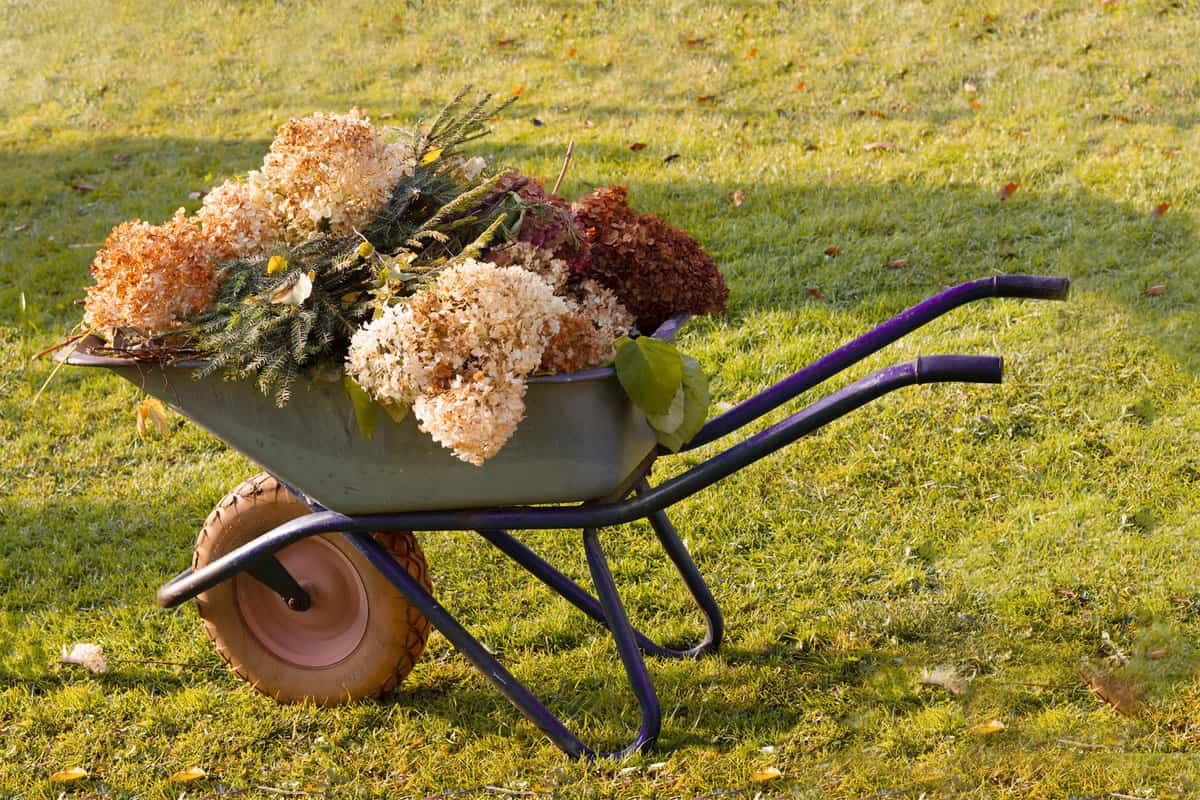
The ideal time to remove hydrangeas is during the dormant season, usually in late winter or early spring.
Read more: When To Cut Back Hydrangeas [And How To Do That]
This allows for less stress on the plant and minimizes the risk of damaging nearby plants.
Here's how to safely remove hydrangeas in your garden:
Step 1: Gather Your Tools and Materials
To remove your hydrangeas, you will need a few essential tools and materials, including pruning shears or a saw, a shovel or spade, gloves, trash bags, or a compost bin.
Looking for a sturdy gardening tool set? Check this one out!
Step 2: Prune Your Hydrangeas
Before digging up your hydrangeas, it's a good idea to prune them back first.
Doing so will make it easier to remove the plant and will also help prevent any damage to nearby plants or structures.
Use your pruning shears or saw to cut back the stems and branches of your hydrangeas, leaving only a few inches of growth above the ground.
Step 3: Dig Up the Hydrangeas
Once you have pruned your hydrangeas, it's time to dig them up.
You can take on this task easily with the help of a reliable digging tool, such as the Radius Garden Root Slayer shovel.
Click here to see this on Amazon.
As you dig deeper, try to loosen the soil around the root system to make it easier to extract the plant.
Once you've reached the majority of the roots, hold the base of the hydrangea and gently rock it back and forth to remove it from the ground.
Step 4: Dispose of the Hydrangeas
Once you have removed your hydrangeas, it's essential to dispose of them properly.
If the plant is diseased or damaged, it's best to put it in a trash bag and dispose of it in the garbage.
If the plant is healthy, you can add it to your compost bin.
Step 5: Fill Up the Hole
After removing your hydrangeas, you will be left with a hole in your garden. Use the soil you dug up earlier to fill in the hole, making sure to pack it down firmly.
You can also add some compost or fertilizer to the soil to help nourish your remaining plants.
Putting It All Together
Hydrangea roots are generally well-behaved, so you don't have to worry about them causing trouble with your pipes or foundation.
Remember, hydrangeas can grow quite a bit larger after they've been in the ground for a year or two!
So, keep these tips in mind when planning your garden and give your hydrangeas the space they need to flourish.
Want to learn more about Hydrangeas? Follow the helpful links below:
Do Hydrangeas Like Soggy Soil? [And How Often To Water One]
How To Keep Limelight Hydrangea Small [Pruning Tips Included]


